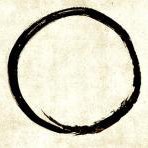Hello,
You allude also how to recognize good or poor workmanship. You are obviously not sure on your piece in question.
There are a lot of examples discussed in this forum which show clearly a low level workmanship in comparison with more elaborate works - mostly depicting scenes.
It is much more difficult to judge on Tsuba with simple design. And here’s only one picture.
However, what I can see here is a well made shape: the kaku-maru-gata has regular curved corners and slight curvature at all sides. In my eyes a good impression.
The surface seems to be very plain, without any intended irregularities. But that’s typical for Edo-Tsuba.
I made a quick sketch to show the construction. Even it is a simple composition it is properly made at least.
There’s a contrast in between the straight bars (which meaning is still unclear) and the curves at the edge.
I remember a similar example somewhere in my books in which the bars have been filled with shakudo (if I remember correctly). Maybe I will find it.
Is there a difference in thickness between edge and seppa-dai? Dimensions will be helpful, too.
Best


